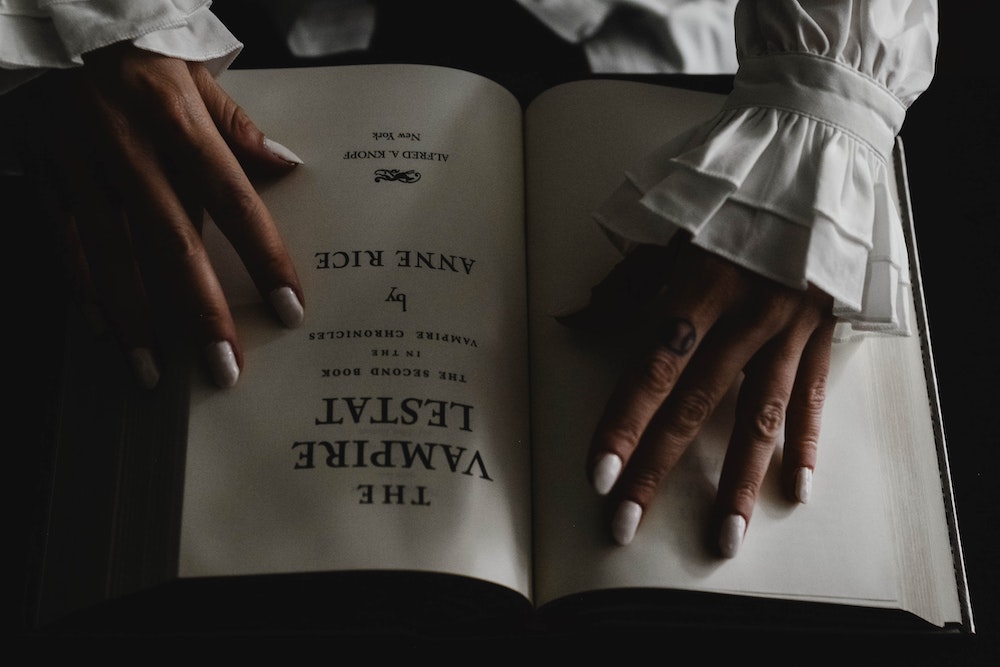essays
I Needed to Know if My Favorite Books Were Products of Cultural Appropriation
From Steinbeck to Foster, Cindy Fazzi reexamines some of literature’s most loved classic novels

Growing up in Manila, my idea of certain countries was shaped primarily by novels. I equated John Steinbeck’s California novels with the United States, Pearl S. Buck (The Good Earth) with China, and E.M. Forster (A Passage to India) with India. The only “Mexican book” I could remember was Steinbeck’s The Pearl. What’s wrong with this picture?
It took a recent visit to Steinbeck’s hometown of Salinas, California, to make me realize that the novels I cherish for depicting the struggles of “the other” were all written by white authors. At the National Steinbeck Center, a display on The Pearl highlighted the fact that it was based on a Mexican folktale the author heard about while visiting La Paz in northwestern Mexico. From Tortilla Flat to Of Mice and Men to The Grapes of Wrath, Steinbeck wrote about Mexican and Italian immigrants, laborers, and the downtrodden. An exhibit at the museum even featured pictures of Filipino field workers in Salinas.
On the one hand, I blame my limited literary exposure for my choice of books. On the other hand, it can also be attributed to the sheer global dominance of white literature then and now. I was a bookish girl born into a family of nonreaders in the Philippines, a former U.S. colony. What were the chances at the time that someone like me would have access to books written by authors such as Carlos Fuentes, Eileen Chang (also known as Zhang Ailing), and Khushwant Singh? Zero.
This is not to diminish the considerable talents and significant accomplishments of Steinbeck, Buck, and Forster. Steinbeck and Buck were winners of the Nobel Prize in Literature, while Forster was nominated for the prize thirteen times. They were such great writers that they succeeded in portraying characters outside of their culture and class. Indeed, they were lauded for writing characters who were not like them.
Evaluating classic books wasn’t just an intellectual exercise to satisfy my curiosity.
And yet the question nagged at me: Are my beloved books products of cultural appreciation or appropriation? To find an answer, I explored the concept of cultural appropriation. The term gets thrown around a lot, but what does it really mean?
Evaluating classic books wasn’t just an intellectual exercise to satisfy my curiosity. I needed an answer as a writer of color living in America. I needed to understand what the boundaries are in my own writing. I want to be able to contribute to the Filipino American narrative, and that’s why my stories focus on my own culture. But am I supposed to write only about Filipinos and the Philippines?
Culture itself is arguably a result of all kinds of appropriation. Every culture is an amalgamation of various practices and influences that evolve as surely as life does. Who’s to say that the traditional Filipino lumpia isn’t an appropriation of the Chinese spring roll? Chinese people have immigrated to the Philippines throughout history, hence their cuisine and culture are ingrained in Filipino life.
In terms of literature, the question typically centers on whether it’s acceptable to write “outside the lane” of the author’s own ethnicity and culture. As a writer, I say yes without hesitation. I agree with Toni Morrison when she defended William Styron’s “right” to fictionalize the life of Black preacher and rebel Nat Turner. But she qualified her comment with an important caveat.
In an interview with the Paris Review, Morrison shared her thoughts on Styron’s 1967 novel The Confessions of Nat Turner. “He has a right to write about whatever he wants. To suggest otherwise is outrageous,” said Morrison in the article published in 1993. However, Morrison criticized how Styron portrayed Turner as someone who felt superior to other Blacks. She questioned its accuracy because why would other Blacks follow a leader who displayed such a disdain for them?
“What kind of leader is this who has a fundamentally racist contempt that seems unreal to any Black person reading it? Any white leader would have some interest and identification with the people he was asking to die,” said Morrison.
Racism and cultural appropriation aside, every fiction writer aims to write a believable story.
Fiction writing requires the exercise of imagination. Writers should be able to write about anything—but they should depict people, places, and cultures with sensitivity and empathy. Racism and cultural appropriation aside, every fiction writer aims to write a believable story, and empathy is the one crucial ingredient in great storytelling.
So, are The Pearl (1947), The Good Earth (1931), and A Passage to India (1924) works of cultural appropriation? In an article published by Everyday Feminism, Maisha Z. Johnson defines cultural appropriation as “when somebody adopts aspects of a culture that’s not their own.” That’s only half the story.
Johnson lists nine things that make cultural appropriation so wrong. In addition to using the Morrison standard as a guide, I also used Johnson’s framework to assess the three classic novels in question. Did they perpetuate racist stereotypes? Did they trivialize historical oppression? Did the works show appreciation for a culture but remain prejudiced against the people represented by such culture? Did the white authors profit from marginalized people’s works?
Context always matters, so answering those questions required a closer look at the careers of Steinbeck, Buck, and Forster, especially as they relate to the three books in question. Did they write those books for gain or because they genuinely cared about the cultures represented in their novels?
Steinbeck was born on Feb. 27, 1902, to a middle-class family. He went to Stanford University but didn’t earn a degree. He worked different jobs as a laborer, which exposed him to immigrant workers. He was not affiliated with any leftist group, but he was known as a radical writer for his depiction of the oppression of the working class in his books.
The Grapes of Wrath (1939), an instant bestseller and considered his finest work, offended many people. The board of supervisors in Kern County, California, banned the book for its portrayal of its citizens as “low, ignorant, profane, and blasphemous,” according to William Souder in Mad at the World: A Life of John Steinbeck. The novel was banned in some libraries in California, New Jersey, and Kansas. There were incidents of book burning in California and Missouri.
I’m convinced Steinbeck didn’t write The Pearl to add to his already established fame and fortune but out of a genuine affinity for the story.
The Pearl, like other Steinbeck books, focuses on marginalized people. But unlike his other stories, it’s told from a Mexican point of view. It’s about a Mexican pearl diver who can’t believe his luck when he finds the most perfect pearl. But instead of bringing him riches, the pearl causes envy and violence. The short novel was not as popular as Steinbeck’s other works. And yet he adapted it into a film (1948) featuring a Mexican director and cast. It was the first Mexican film to be distributed widely in the U.S.
Steinbeck traveled to Mexico many times, including a six-week, specimen-collection trip that became the basis of The Log from the Sea of Cortez (1951), a nonfiction book. He cowrote it with his friend, Ed Ricketts, a marine biologist. I’m convinced Steinbeck didn’t write The Pearl to add to his already established fame and fortune but out of a genuine affinity for the story.
I’m apt to say that in both novels and in A Passage to India, Forster was writing about ‘the other place’ more than ‘the other.’
Like The Pearl, Buck’s The Good Earth was written from the point of view of a person of color, a Chinese farmer named Wang Lung. The novel follows Lung’s struggles from rags to riches. Buck blazed a trail for writing a book from a Chinese perspective and for her portrayal of an Asian protagonist as a full human being with strengths and desires, but also many flaws. Buck didn’t romanticize concubines or trivialize slavery and opium addiction, but wrote about them in a detached third-person voice. Other books at the time portrayed nonwhite foreigners as “the other,” typically inferior or someone to be feared and generally less than human.
Buck was born on June 26, 1892, in Hillsboro, West Virginia, but she grew up in China where her Presbyterian missionary parents worked. As an adult, she returned to China to take care of her ailing mother. She met her first husband, John Lossing Buck, in China. They lived there in the early part of their marriage.
The Good Earth clearly stemmed from the author’s lifelong connection with China. Indeed, it was the setting for most of her work, including nonfiction books. She directed her humanitarian work toward helping disadvantaged children around the world, which the Pearl S. Buck Foundation continues to do today.
A Passage to India is unlike the first two books, which were written from a nonwhite character’s POV. Forster’s book presents the perspective of Dr. Aziz, a young Indian, alongside the POVs of white characters. Adela Quested, a young Englishwoman, accuses charming Dr. Aziz of attempted rape during their excursion to a cave. At the trial of Aziz, she ultimately admits her uncertainty of what really happened and withdraws the charges.
Forster was born on Jan. 1, 1879, in London, to an upper middle-class family. His father was an architect who died when Forster was a baby, but he and his mother each had the advantage of an inheritance. He was educated at King’s College in Cambridge. Forster visited India twice and worked as a secretary of a maharaja for six months. I have no doubt that his long-standing interest in India was sincere.
Before A Passage to India, the author was known for his novels set in Italy (Where Angels Fear to Tread, published in 1905, and A Room with a View, published in 1908). I’m apt to say that in both novels and in A Passage to India, Forster was writing about “the other place” more than “the other.” Indeed, he didn’t write the latter solely from Dr. Aziz’s POV.
Like his “Italian novels,” Forster focused more on how the foreign landscape affects white characters in A Passage to India. The book’s title itself implies the perspective of an outsider, someone like Forster who’s just passing through the country. It was the last novel he wrote.
Going back to white authors on the slippery slope of writing about “the other,” I have to ask: Did Steinbeck, Buck, and Forster have the right to write the three books in question? Yes, absolutely.
Did they appropriate? Yes, they did. Did they show empathy for people of color in their novels? Yes, they did. Empathy is part of the reason the three novels, all of which have been adapted into movies, are popular. Putting the books within the context of their careers, the three authors showed a deep appreciation for the people and cultures depicted in their works.
To gain a better understanding of those countries and their cultures, it’s best to read books written by native authors.
Did they profit from the works of marginalized people? No, the books arose from their own travels and experiences. They were not casual tourists either. Even The Pearl can’t be attributed to a single Mexican creator, just as you can’t attribute the sombrero to a particular Mexican designer.
After my own assessment of The Pearl, The Good Earth, and A Passage to India, I still like them. There’s nothing wrong with enjoying books like them. But I no longer think of them as representative of the cultures of Mexico, China, and India respectively. To gain a better understanding of those countries and their cultures, it’s best to read books written by native authors. I’ll take this a step further by saying it’s only right to read the works of native authors.
As readers we’re lucky to have access to books from around the world today. Unlike the time of my adolescence in Manila, there’s no dearth of great books from far and near. We can borrow books from the library or buy them with just a few clicks on the computer or a smartphone.
As readers we want to read all kinds of stories. For that to happen, we can all agree that writers should be able to write whatever they want. Period. As a writer, I will add that such freedom is ultimately a privilege that readers grant us. So, we should hold ourselves accountable for what we write, especially when we’re writing about people and cultures that are not our own.
It will probably take a long time for Filipino American stories to become part of mainstream American literature. Most likely, I will be writing inside my lane for the rest of my career, hoping to contribute to that effort. But I would like to think that if I can earn readers’ trust enough to suspend disbelief, I can also enjoy the privilege of writing something other than the Filipino experience.








